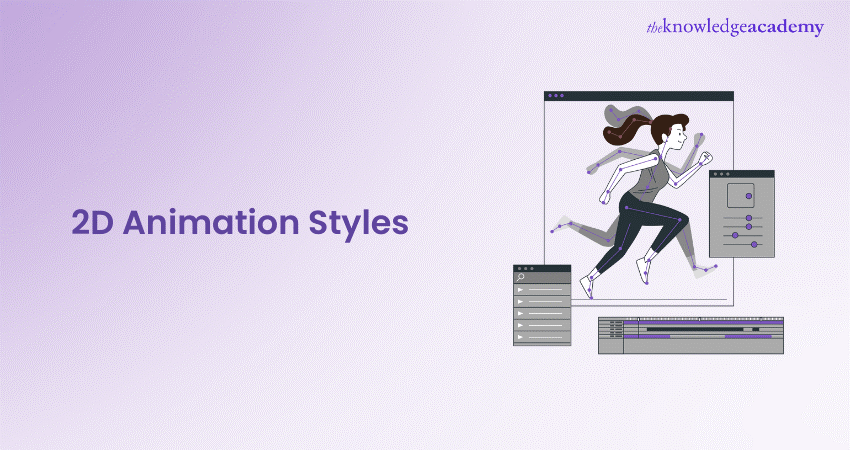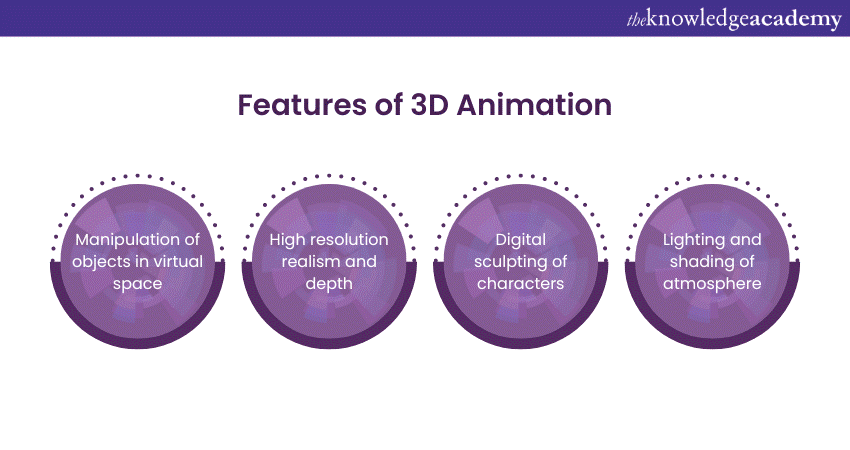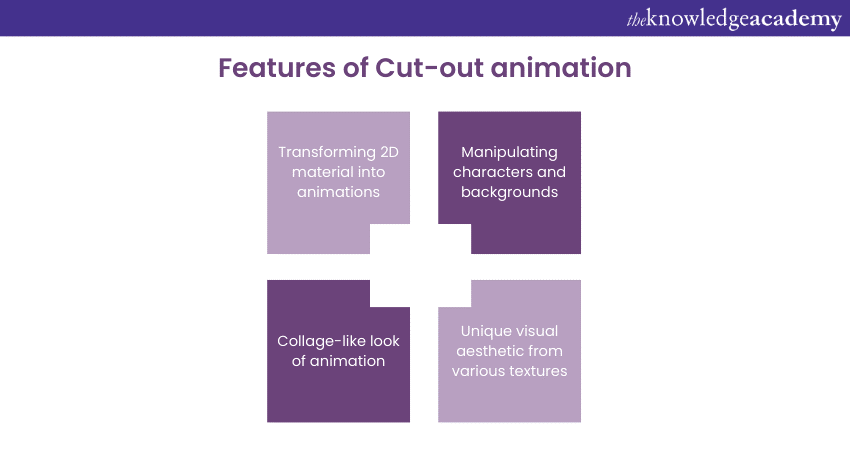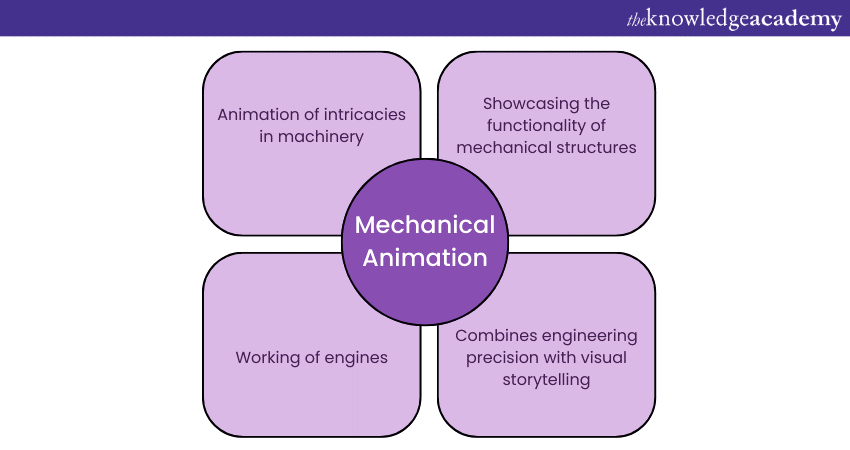We may not have the course you’re looking for. If you enquire or give us a call on +44 1344 203 999 and speak to our training experts, we may still be able to help with your training requirements.
Training Outcomes Within Your Budget!
We ensure quality, budget-alignment, and timely delivery by our expert instructors.

Welcome to the vibrant world of Animation, where creativity knows no bounds. The captivating universe of 2D Animation Styles encompasses the nostalgic charm of traditional hand-drawn animation and the sleek dynamism of motion graphics; each style within this diverse category contributes to the rich tapestry of visual storytelling.
Moreover, every stroke, frame, and style come together to breathe life into narratives and captivate audiences across the ever-expanding spectrum of animated expression. The various 2D Animation Styles include traditional 2D animation, 3D animation, retro animation, 360 animation, realistic cartoon animation, & more.
Table of Contents
1) Basics of 2D Animation
2) 2D Animation Styles
a) Traditional / 2D Animation
b) 3D Animation
c) Retro Animation
d) 360 Animation
e) Realistic Cartoon Animation
f) Cut-out animation
g) Typography Animation
h) Rotoscope Animation
i) Isometric Animation
j) Real world footage with Animation
3) Conclusion
Basics of 2D Animation
2D animation, a timeless art form, breathes life into images through a two-dimensional plane. At its core, 2D animation involves the sequential creation of frames to simulate movement. The process begins with an artist crafting individual frames, each depicting a slight progression in motion.
Traditionally, these frames were drawn by hand, exemplifying the meticulous artistry behind classic animations. In the digital era, 2D animation has evolved with the advent of sophisticated software, offering animators more efficient tools. Key aspects of 2D animation include:
1) Frame-by-frame Animation: The fundamental technique involves creating each frame of the animation individually. This meticulous approach allows for nuanced control over motion and expression, fostering a handcrafted feel.
2) Rigging: In contrast to frame-by-frame, rigging involves creating a skeleton or structure for characters, making them movable like puppets. This technique streamlines the Animation Process and is commonly employed in vector-based animation.
3) Timing and spacing: Mastery of timing and spacing is crucial. Determining the rhythm and intervals between frames ensures a natural flow, creating the illusion of seamless motion.
4) Principles of Animation: Embracing principles like squash and stretch, anticipation, and follow-through enhances the realism and appeal of 2D animations, making them engaging and visually captivating.
2D Animation styles
Here is a list describing the various 2D Animation styles in detail:
1) Traditional or 2D Animation
Rooted in the rich history of animation, traditional animation is an artisanal craft. Artists painstakingly draw each frame by hand, creating a tangible connection between creator and creation.
This method, epitomised by classics like Disney's hand-drawn masterpieces, embodies the essence of timeless storytelling. Traditional animation involves the use of transparent cells, meticulously painted backgrounds, and an immersive frame-by-frame approach, allowing for a depth of expression and character rarely paralleled.
Create fascinating characters for animations by signing up for our 2D Animation Training now!
2) 3D Animation

3D Animation is a transformative process where creativity and technology converge, bringing static images to dynamic life in a three-dimensional space. Unlike its 2D counterpart, 3D Animation Skills involve the manipulation of objects within a virtual environment, offering unparalleled realism and depth.
The process commences with modelling, where digital artists sculpt lifelike characters, environments, or objects. These models are then textured, adding intricate details to surfaces. Rigging follows, wherein a digital skeleton is constructed, enabling movement. Animators breathe life into these structures, defining motion and expression.
Lighting and shading contribute to the atmosphere, creating realistic effects. Finally, rendering synthesises these elements into the final animated sequence. Furthermore, 3D animation is ubiquitous in industries ranging from film and gaming to architecture and education.
Develop video games with animations and effects by signing up for our Blender 3D Modelling for Unity Training now!
3) Retro Animation
Retro Animation, a delightful journey into the past, encapsulates the unique aesthetic and storytelling styles prevalent in animation's earlier eras. Characterised by its vintage flair, retro animation pays homage to the hand-drawn techniques that laid the foundation for the animated art form.
Drawing inspiration from the mid-20th century's golden age of animation, retro animation often embraces simpler forms, limited colour palettes, and charming imperfections. These characteristics, reminiscent of classic cartoons and early animated features, evoke a sense of warmth and nostalgia.
4) 360 Animation
360 Animation, a revolutionary leap in immersive storytelling, transports viewers into an all-encompassing visual experience. Unlike traditional animations confined to a two-dimensional plane, 360 animation utilises cutting-edge technology to create content that engulfs audiences in a full panoramic view.
At the heart of 360 animation is virtual reality (VR) and augmented reality (AR) technology. Through specialised cameras or computer-generated environments, creators capture or construct a 360-degree field of view, allowing viewers to explore every angle of the animated world.
5) Realistic Cartoon Animation
Realistic cartoon animation represents a fascinating convergence of the fantastical charm of cartoons with a commitment to lifelike detail and authenticity. In this genre, animators infuse characters and settings with a high degree of realism, challenging the traditional boundaries of animated storytelling.
Realistic cartoon animation often features characters with nuanced expressions, intricate textures, and lifelike movements akin to the level of detail found in live-action films. This careful balance between realism and cartoonish stylisation results in visually captivating and emotionally resonant animation.
6) Cut-out animation

Cut-out animation, a distinctive and captivating technique, transforms two-dimensional materials into dynamic, animated narratives. This method involves manipulating pre-cut characters, objects, and backgrounds, akin to stop-motion animation, yet distinguished by its use of flat, textured elements.
Artists meticulously cut out characters, props, and backgrounds from various materials, such as paper, fabric, or photographs. These elements are then arranged and manipulated frame by frame to create fluid motion. The charm of cut-out animation lies in the tactile quality of its crafted components.
The visual aesthetic of cut-out animation is characterised by its collage-like appearance. The juxtaposition of different textures, colours, and patterns adds a unique visual flair to the animation. This style can range from whimsical and playful to sophisticated and abstract, providing a versatile canvas for creative expression.
Create and market your graphic projects by signing up for our Animation and Design Training now!
7) Typography Animation
Typography animation elevates the art of text, turning static words into a visually dynamic and expressive medium. This creative form of animation focuses on the movement, transformation, and synchronisation of typographic elements to convey messages in a compelling and engaging manner.
Additionally, Typography animation goes beyond static fonts by introducing dynamic movements to letters and words. Each character becomes a visual element in a choreographed dance, enhancing the storytelling aspect and creating a memorable visual impact.
Kinetic typography, a subset of typography animation, specifically emphasises the motion of text. Words dance, slide, or morph on the screen, syncing with audio elements to reinforce the message or emotion behind the text. This dynamic synergy between visual and auditory elements enhances the overall viewer experience.
8) Rotoscope Animation
Rotoscope animation stands at the intersection of live-action footage and hand-drawn artistry, creating a unique blend of realism and imaginative expression. In this technique, animators trace live-action footage frame by frame, infusing the animation with the authentic movements and nuances of real-life actors.
Additionally, the process begins with live-action filming, and each frame is then individually traced, often onto animation cells or directly into a digital platform. This meticulous frame-by-frame tracing retains the organic motion of the live-action source while allowing for artistic embellishments and alterations.
Rotoscoping serves as a bridge between reality and animation. It captures the nuances of human movement with a level of detail that is challenging to replicate through traditional animation. Simultaneously, it provides animators with the freedom to stylise and exaggerate, adding a layer of artistic interpretation to the original footage.
9) Isometric Animation
Isometric animation is a visual marvel that brings depth and perspective to a two-dimensional plane, creating a captivating illusion of three-dimensional space. Unlike traditional animation, which often adheres to realistic proportions, isometric animation plays with perspective, maintaining equal angles between axes for a unique and stylised look.
At the heart of isometric animation is the adherence to isometric projection, where lines remain parallel, providing an equal sense of scale in all directions. This geometric precision gives rise to an aesthetically pleasing and visually engaging animation style.
Isometric animation achieves depth without relying on traditional linear perspective. Objects and characters move in a manner that preserves their size relationships, providing a consistent and intriguing visual experience. This characteristic makes isometric animation particularly well-suited for showcasing environments, architectural designs, and intricate landscapes.
10) Real world footage with Animation
The integration of real-world footage with animation marks a dynamic synergy, offering filmmakers and content creators a powerful tool to transcend the boundaries between reality and fantasy. This technique involves overlaying animated elements onto live-action scenes or seamlessly embedding animated characters and objects within a live-action environment.
By merging real-world footage with animation, creators unlock new dimensions of visual storytelling. This approach allows for the incorporation of fantastical creatures, magical effects, or imaginative worlds into scenes filmed in tangible reality, creating a visually captivating narrative.
11) Stop motion Animation
Stop motion animation is a mesmerising craft that animates inanimate objects, imbuing them with movement and personality through a meticulous process of frame-by-frame photography. Each frame captures a moment, and when played in sequence, these still images come to life, creating the illusion of motion.
The heart of stop motion lies in its painstaking frame-by-frame approach. Animators manipulate physical objects, often puppets or clay figures, incrementally adjusting their positions to create fluid movement. This meticulous process demands patience, precision, and a keen eye for detail.
12) Mechanical Animation
Mechanical animation breathes life into the intricate movements of machines and devices, showcasing the functionality and precision of mechanical systems. Through animation, gears turn, levers pivot, and intricate mechanisms perform their functions in a visually compelling dance.
This specialised form of animation often serves educational purposes, explaining complex processes and machinery with clarity. From showcasing the inner workings of engines to illustrating the assembly of intricate devices, mechanical animation seamlessly merges engineering precision with the visual storytelling power of animation, offering an engaging and informative experience for viewers interested in the mechanics of the world around them.
13) Claymation Animation
Claymation animation, a tactile wonder, transforms malleable clay into animated characters and worlds. This stop-motion technique involves sculpting characters frame by frame, capturing the magic of three-dimensional forms in motion.
The pliability of clay allows for fluid movements and expressive characterisations, making each creation unique. Claymation's charm lies in its tangible, handmade aesthetic, evoking a sense of craftsmanship and artistry.
14) Mechanical Animation

Mechanical animation meticulously animates the intricate workings of machinery, bringing gears, levers, and complex systems to life in a visually captivating dance. This specialised form of animation serves to showcase the precision and functionality of mechanical structures.
Whether revealing the inner workings of engines, illustrating assembly processes, or highlighting intricate devices, mechanical animation seamlessly combines engineering precision with the visual storytelling power of animation.
15) Audio-Animatronics
Audio-Animatronics animation is a groundbreaking fusion of technology and artistry that brings lifelike, three-dimensional characters to the forefront. Employing robotics and synchronised audio, it imbues figures with realistic movements, making them seemingly come alive.
Originating from Disney's innovative Imagineering, audio-animatronics excel in theme park attractions and immersive experiences. These animated entities, with synchronised speech and precise motions, blur the line between reality and fantasy.
16) Hand Drawn Animation
Hand-drawn animation, a timeless craft, breathes life into static images with the stroke of an artist's hand. Each frame is a meticulously crafted work of art, contributing to the seamless flow of motion.
This traditional technique, exemplified by classics like Disney's masterpieces, captures the essence of storytelling through the artist's personal touch. From expressive character movements to vibrant backgrounds, hand-drawn animation transcends technical precision to evoke emotions.
It intends to preserve the organic and intimate connection between the artist and the animated world. Its enduring charm lies in the fusion of artistry, skill, and the magic of bringing drawings to life.
Create stellar digital sketches and renderings by signing up for our Sketchbook Essential Training now!
17) Flipbook Animation
Flipbook animation is a simple yet enchanting form of animation where a series of images come alive when rapidly flipped. It transforms a stack of sequentially drawn images into a fluid and mesmerising motion.
As each page turns, characters dance, objects transform, and stories unfold in the palm of the viewer's hand. This analogue animation technique, reminiscent of childhood creativity, captures the essence of motion with a tactile charm.
A flipbook's whimsical simplicity transcends generations, showcasing the enduring allure of creating animated narratives with the flip of a page.
18) Zoetrope Animation
Zoetrope animation is a mesmerising optical illusion that breathes life into static images. Consisting of a spinning cylinder or disc with strategically placed slits, it reveals a sequence of images when rotated.
As the viewer peeks through the slits and the device spins, the images appear to merge into a continuous, animated loop. This early animation device, a precursor to film, captures the enchantment of motion in a mesmerising and rhythmic display.
Zoetropes, with their ingenious simplicity, offer a nostalgic glimpse into the evolution of animation and remain a charming testament to the magic of visual storytelling.
19) Motion Graphics
Motion graphics animation seamlessly blends design elements, typography, and visual effects to convey information dynamically. It transforms static graphics into compelling narratives through fluid movements and transitions.
Employing software like After Effects brings a contemporary and sleek aesthetic to various mediums, including videos, presentations, and user interfaces. This versatile form of animation harnesses the power of movement to enhance communication, creating visually engaging experiences.
Build and create interactive courses by signing up for our Articulate Storyline Training Masterclass now!
20) White board Animation
Whiteboard animation employs a minimalist yet impactful approach, where illustrations unfold on a white background, resembling the process of live sketching on a whiteboard. This technique utilises time-lapse or stop-motion effects, capturing the creation of drawings and text in real-time.
As each element appears and evolves, complex concepts are simplified, making it an effective tool for educational content, explainer videos, and presentations. Whiteboard animation's uncluttered aesthetic and the illusion of spontaneous creation provide a visually engaging and accessible means to convey information, transforming mundane topics into captivating and comprehensible visual narratives.
Conclusion
In conclusion, 2D animation styles showcase the timeless allure and evolving possibilities within this art form. From traditional hand-drawn elegance to the dynamic precision of motion graphics, 2D Animation Styles encompass rich creativity that continues to shape the captivating world of animated storytelling.
Enhance your animation skills and techniques by signing up for our Animation Masterclass now!
Frequently Asked Questions
Upcoming Office Applications Resources Batches & Dates
Date
 Animation Course
Animation Course
Fri 17th Jan 2025
Fri 7th Mar 2025
Fri 23rd May 2025
Fri 18th Jul 2025
Fri 12th Sep 2025
Fri 12th Dec 2025







 Top Rated Course
Top Rated Course



 If you wish to make any changes to your course, please
If you wish to make any changes to your course, please


